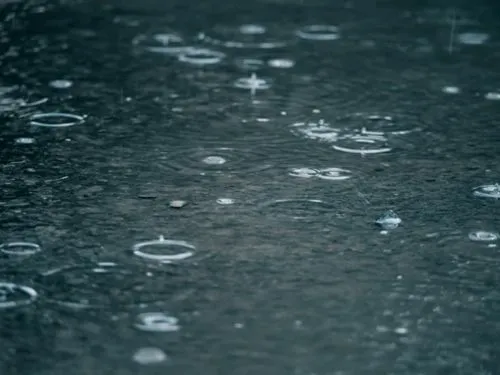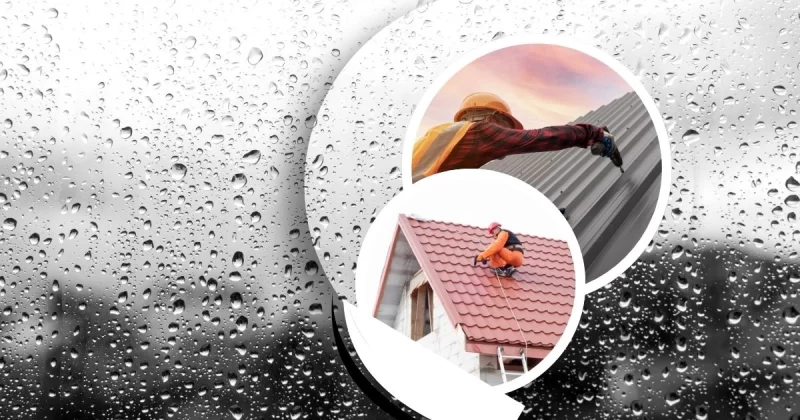Rainwater harvesting cost offer a sustainable approach to reducing utility bills by efficiently converting roof precipitation into non-potable water, suitable for essential uses such as irrigation and indoor household applications like toilet flushing. The installation cost for these rainwater harvesting systems ranges widely, from simple DIY rain barrels costing around $100 to comprehensive, whole-house setups that may exceed $15,000. However, most homeowners seeking significant non-potable capacity typically invest between $1,000 and $5,000.
The ultimate cost of rainwater harvesting systems is determined by the specific system type (Entry-Level, Dry, or Wet/Underground), the size and construction material of the storage tank, the complexity of required filtration, and the decision between professional and DIY installation. Yet, this initial financial outlay is consistently offset by long-term cost savings, enhanced home resilience, and accessible government rebates.
The Three Tiers of Rainwater Harvesting Systems
Budgeting for a rainwater harvesting project requires defining its scope and scale. Residential rainwater harvesting systems are typically categorized into three tiers based on their complexity and capacity.

1. The Entry-Level: Rain Barrels
This represents the most budget-friendly and simplest option, suitable for beginners or for addressing limited water needs, such as a small garden or potted plants.
- Components: A plastic or wooden barrel, typically 50 to 120 gallons in volume, a downspout connection kit, and a spigot.
- Capacity: Limited; appropriate for small-scale, non-potable uses such as watering small lawn areas or washing a vehicle.
- Shopping Costs: A single 55-gallon polyethylene rain barrel generally costs between $80 and $160. Pre-packaged kits that include necessary connection parts may incur a slightly higher cost.
- Installation: Installation is predominantly DIY. Connection of the barrel to a downspout can typically be completed in under an hour with basic tools.
- Total Cost Estimate: $100 to $ 300 per barrel.
2. The Mid-Range: The Dry System
A dry system constitutes an upscaled rain barrel setup. It utilizes a large storage tank, or cistern, positioned near the structure. Water flows from the gutter and downspout directly into the top of the tank. The defining characteristic is that the pipe empties completely and remains “dry” between rainfalls, thereby mitigating standing water issues and associated maintenance concerns.
- Components: A larger storage tank (500 to 5,000 gallons), pre-tank filtration devices (such as a leaf screen or first flush diverter), and piping. A pump may be required to deliver water at sufficient pressure for irrigation.
- Capacity: Adequate for considerably larger non-potable requirements, including extensive landscaping, pool replenishment, and potentially indoor uses such as toilet flushing and laundry, subject to local regulations and additional treatment.
- Shopping Costs: The storage tank is the primary expenditure. A 5,000-gallon polyethylene tank may cost between $2,000 and $4,000 for the tank material alone. Supplementary components, such as a first-flush diverter (approximately $20 to $60) and a pump (roughly $150 to $ 300), increase the material cost.
- Installation: While installation can be a DIY undertaking for individuals with plumbing and construction aptitude, professional assistance is often beneficial, particularly for the correct placement of the large tank, pump, and distribution plumbing.
- Total Cost Estimate: $1,000 to $5,000, including basic installation.
3. The High-End: The Wet or Underground System
This tier is designed for maximum collection capacity. It is frequently used for whole-house water supply (which requires advanced treatment for potable use) or for aesthetic reasons when concealing a large tank is necessary. A wet system employs underground piping to connect multiple downspouts to a single cistern situated at a lower elevation than the collection points. The pipes retain water between rainfall events. An underground cistern provides substantial water storage, conserves yard space, but requires significant excavation.
- Components: High-capacity tanks (often thousands of gallons, constructed from durable materials such as steel or concrete), extensive underground piping networks, high-quality pumps, and multi-stage treatment systems (including sediment filters, carbon filters, and UV disinfection units).
- Capacity: Maximum capacity, providing water for non-potable uses and potentially potable (drinking) use following advanced treatment protocols.
- Shopping Costs: Tanks constructed from steel or concrete for underground placement are more costly, with 5,000-gallon sizes typically ranging from $3,000 to $6,000. UV disinfection systems necessary for potable use can add $350 or more to material costs, bringing the total to over $ 1,000.
- Installation: Professional installation is strongly recommended or required due to excavation, specialized heavy lifting for tank placement, complex underground plumbing, and specialized electrical and filtration connections.
- Total Cost Estimate: $8,000 to over $15,000, with some large-scale underground systems potentially exceeding $25,000.
The Major Rainwater Harvesting Cost Drivers: Components and Materials
The final cost of the system is predominantly dictated by the materials selected for the four primary components: Collection, Conveyance, Storage, and Treatment.
The Storage Tank: The Single Biggest Expense
The tank’s capacity and construction materials are the most significant budgetary factors.
- Tank Material (5,000 Gallons) Cost Range (Materials Only) Characteristics
- Polyethylene (Plastic) $2,000 to $4,000 Lightweight, corrosion-resistant, standard for above-ground. Vulnerable to UV degradation; less aesthetic.
- Fiberglass $2,000 to $5,000 Durable, suitable for above or below ground. Repairs can be complex.
- Steel (Galvanized/Corrugated): $3,000 to $6,000. Highly durable, aesthetically suitable for above-ground use, and excellent longevity. Susceptible to rust if the coating is compromised; heavy.
- Concrete $3,000 to $6,000+ Extremely durable, essential for underground placement, high structural integrity. Requires heavy equipment for installation; the highest labor cost.
- Capacity Consideration: System sizing requires calculating the roof area (the collection surface) and the local average rainfall. A roof area of 1,000 square feet receiving 1 inch of rain can capture approximately 620 gallons of water. In regions experiencing dry spells, a larger tank capacity is essential to reserve water for non-rainy periods.
Conveyance and Pre-Filtration
This includes the gutters, downspouts, and pipes that transport water from the roof to the storage tank. Existing gutters may require modification or replacement.
- Gutters and Downspouts: Replacement or new installation costs vary. Vinyl or PVC gutters may cost $3 to $7 per linear foot, while aluminum can range from $4 to $12$ per linear foot.
- Screens and Filters: These are critical for preventing debris from entering the tank and represent an inexpensive investment.
- Gutter Mesh/Screen: $0.80 to $1.25 per linear foot.
- Downspout Screen/Filter: $10-$50 per unit.
- First Flush Diverter: $20 to $60. This mechanism diverts the initial volume of runoff, which carries the highest concentration of roof debris, ensuring cleaner water enters the main tank.
Distribution and Treatment
Once the water is collected, a mechanism for extraction and purification to meet the intended use standard is necessary.
- Pump and Pressurization: If the tank is situated below the point of water usage (e.g., in a basement or underground), a pump is required. A quality distribution pump typically costs between $150 and $400.
- Filtration System: The required filtration level is dependent on the final water application.
- Basic Sediment Filter: $75-$200 (Adequate for gardening).
- Multi-stage Filtration (for indoor non-potable use): $200 to $500.
- Potable (Drinking) Water System: Advanced treatment is necessary. This requires integrating high-end components, including a UV Disinfection Unit (to eliminate bacteria and viruses), priced at $350 to $1,000, and potentially a separate Reverse Osmosis (RO) system, which can cost from $400 to $1,500.
DIY versus Professional Installation: Evaluating Labor Costs
The decision to install the system personally or engage a professional contractor significantly impacts the budget.
The DIY Advantage (Minimal to Low Cost)
For small-scale systems, such as rain barrels or simple dry systems with above-ground tanks, the DIY approach provides considerable savings by eliminating labor expenses.
- Rain Barrels: This is a straightforward DIY task with minimal associated risks. Labor cost is limited to the installer’s time.
- Simple Dry System: Individuals proficient in basic plumbing, electrical connections (for the pump), and foundation work can install a smaller dry system independently. This saves professional labor costs, which typically range from $50 to $150 per hour.
The DIY Risk: Improper installation can lead to costly failures. An improperly leveled tank may rupture, causing substantial flooding and property damage. Poorly sealed connections cause leaks and water loss. Furthermore, large tanks are heavy and demand specialized equipment for safe placement.
The Professional Advantage (Higher Initial Cost, Enhanced Assurance)
Hiring a certified professional is the recommended approach for complex, high-capacity, or underground systems.
- Expertise and Efficiency: Professionals ensure the system is appropriately sized for the roof and local rainfall and complete the work efficiently, reducing homeowner disruption.
- Compliance and Safety: They are familiar with local building codes and plumbing regulations, which is especially critical for systems connected to interior plumbing or intended for potable use. Improperly installed systems pose a risk of contaminating the municipal water supply, leading to severe legal violations.
- Total Installation Costs: Labor for a professionally installed dry system (excluding tank and materials) can range from $500 to $3,000. For a wet or underground cistern system, labor costs are substantially higher due to excavation, specialized plumbing, and electrical requirements, potentially ranging from $4,000$ to $8,000 or more. Excavation costs alone can range from $1,670 to $6,720.
Average Professional Installation Cost Range (Materials $\text{+}$ Labor):
- Basic Rain Barrel: $100 to $300 (DIY)
- Dry System (Large Capacity): $1,000 to $5,000
- Wet/Underground Cistern System: $8,000 to over $15,000
The Return on Investment: Long-Term Savings and Incentives
Although the initial expenditure may be substantial, rainwater harvesting should be viewed as a long-term capital investment benefiting both property value and environmental stewardship.
Water Bill Reduction
The most immediate financial return is the reduction in municipal water utility expenses. A typical household consumes a significant percentage of its water for non-potable purposes:
- Toilet Flushing: Approximately $24\%$ of indoor water use.
- Laundry: Approximately $17\%$ of indoor water use.
- Outdoor Watering: Can account for over $50\%$ of total household water use during dry seasons.
By substituting municipal water with collected rainwater for these tasks, utility consumption costs are reduced. Property owners with extensive landscaping or large lawns typically realize the greatest savings, potentially recouping the cost of a simple system within a few years. Studies indicate that using rainwater for irrigation and toilet flushing can reduce municipal water usage by up to $50\%$. In regions with high water rates or frequent drought surcharges, the payback period is accelerated even further.
Rebates, Tax Credits, and Incentives
Various local and state governments offer financial incentives to encourage water conservation practices. These incentives can substantially reduce the system’s net initial cost.
- Municipal Rebates: Local water utilities often offer rebates for installing rain barrels or cisterns, ranging from $50 to several hundred dollars.
- State Tax Credits: Some jurisdictions offer tax credits or exemptions on sales tax for rainwater harvesting equipment purchases.
- Grants: In specific areas, particularly those prioritizing stormwater management, regional water authorities may offer grants for larger, more comprehensive systems designed to minimize runoff.
It is essential to investigate available local incentives before procurement, as they can directly influence the selection of the most cost-effective system.
Environmental and Property Value Benefits
In addition to direct cost savings, non-monetary benefits contribute to the long-term value of the property:
- Resilience and Self-Sufficiency: Stored water provides a critical reserve during municipal water service interruptions, restrictions, or natural emergencies such as droughts.
- Eco-Friendly Irrigation: Rainwater is naturally soft and free of chemical treatments like chlorine, which is beneficial for sensitive plants and minimizes the accumulation of soil salts.
- Stormwater Management: Water capture reduces runoff from the property, helping prevent soil erosion and reducing strain on local storm sewer infrastructure.
- Increased Property Value: Homes featuring established, visible sustainable technologies are increasingly attractive to environmentally conscious buyers, potentially leading to a higher resale valuation.
Smart Shopping Tips for Homeowners
To optimize investment and maximize long-term return, the following smart shopping strategies are recommended:
- Prioritize Use: The filtration system investment should be commensurate with the final water use. For gardening purposes only, a basic leaf screen is sufficient. Investment in potable-level filtration should be reserved for systems explicitly intended for drinking, cooking, or bathing.
- Size Correctly: Avoid purchasing an undersized or oversized tank. Utilize an online calculator that incorporates roof square footage and local rainfall data to determine the optimal capacity. An undersized tank will result in frequent overflows, while an oversized tank represents an unnecessary upfront expenditure for rarely used storage.
- Explore Used and Bulk Options: For rain barrels, local online marketplaces may offer used, food-grade barrels suitable for repurposing after cleaning at a fraction of the retail price. For larger tanks, coordinating a bulk purchase with neighbors or checking farm supply outlets may result in cost savings.
- Compare Quotes: When engaging professional installers, solicit at least three detailed quotes from licensed contractors. A comprehensive quote should itemize costs for materials, labor, excavation (if applicable), and auxiliary components such as pumps and filters. Verification that all contractors account for local permit fees and adhere to code requirements is essential.
Rainwater harvesting systems represent an investment in a home’s future, combining environmental responsibility with measurable financial returns. By diligently evaluating system types, materials, and installation methods, homeowners can implement a solution tailored to their budgetary constraints and water conservation objectives. The opportunity exists to harness precipitation and transform it into a valuable, free resource.
The Value Proposition of Water Autonomy
Rainwater harvesting is a demonstrably sound long-term capital investment for the modern homeowner, aligning financial prudence with environmental stewardship.
Initial costs are highly variable, ranging from the low hundreds for Entry-Level rain barrels to over $15,000 for High-End, underground cistern systems. The primary cost determinants are the storage tank’s size and material, and the complexity of filtration required for the intended use (non-potable versus potable).
Despite the upfront expenditure, the investment yields measurable returns through sustained reduction in municipal water bills (up to $50\%$ savings), increased home resilience against water crises, and potential property value enhancement. By actively leveraging local rebates and incentives, homeowners can minimize net costs and accelerate the financial payback period, thereby transforming a natural resource into a valuable, self-managed utility.



